|
Touching the origins of Isamu Noguchi's manufacturing Isamu Noguchi, a sculptor of the 20th century (1904-1988). Excellent modeling works that do not lose charm even in modern times have been evaluated worldwide. In this exhibition, we will introduce the tools of Isamu Noguchi stored at the Noguchi Museum in New York, which will be unveiled for the first time in Japan with images, as well as introduce the manufacturing of Isamu Noguchi using stone materials, small models, and research materials used as materials. 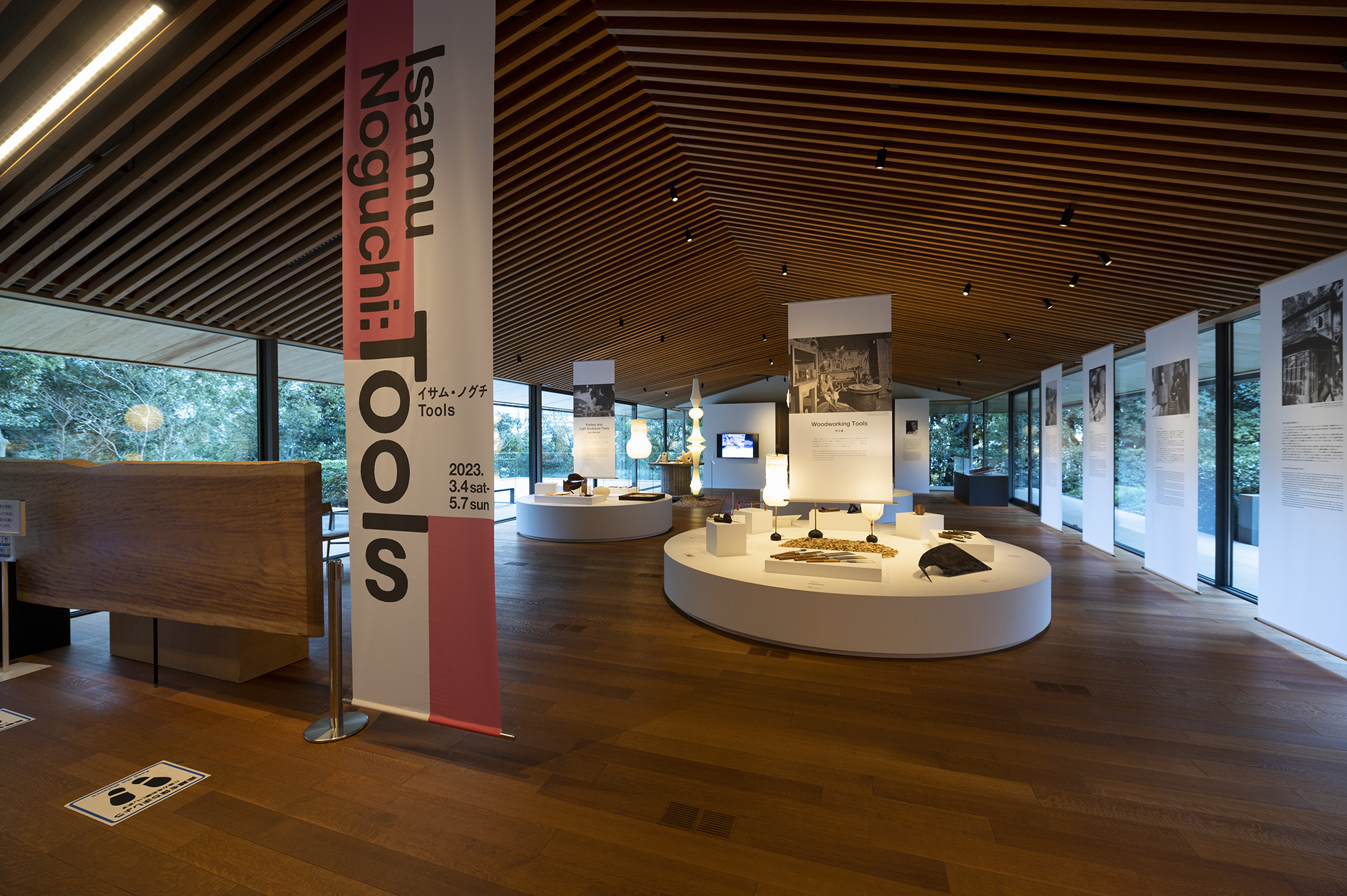 The venue is the 1st floor hall in Takenaka Carpentry Tools Museum where outdoor light shines. The exhibition consists of three white round display stands. It is an image of a unified studio in Blankusi, where Noguchi was taught in Paris during his adolescence. In addition, we use Noguchi's work "Akari" for lighting. |
|
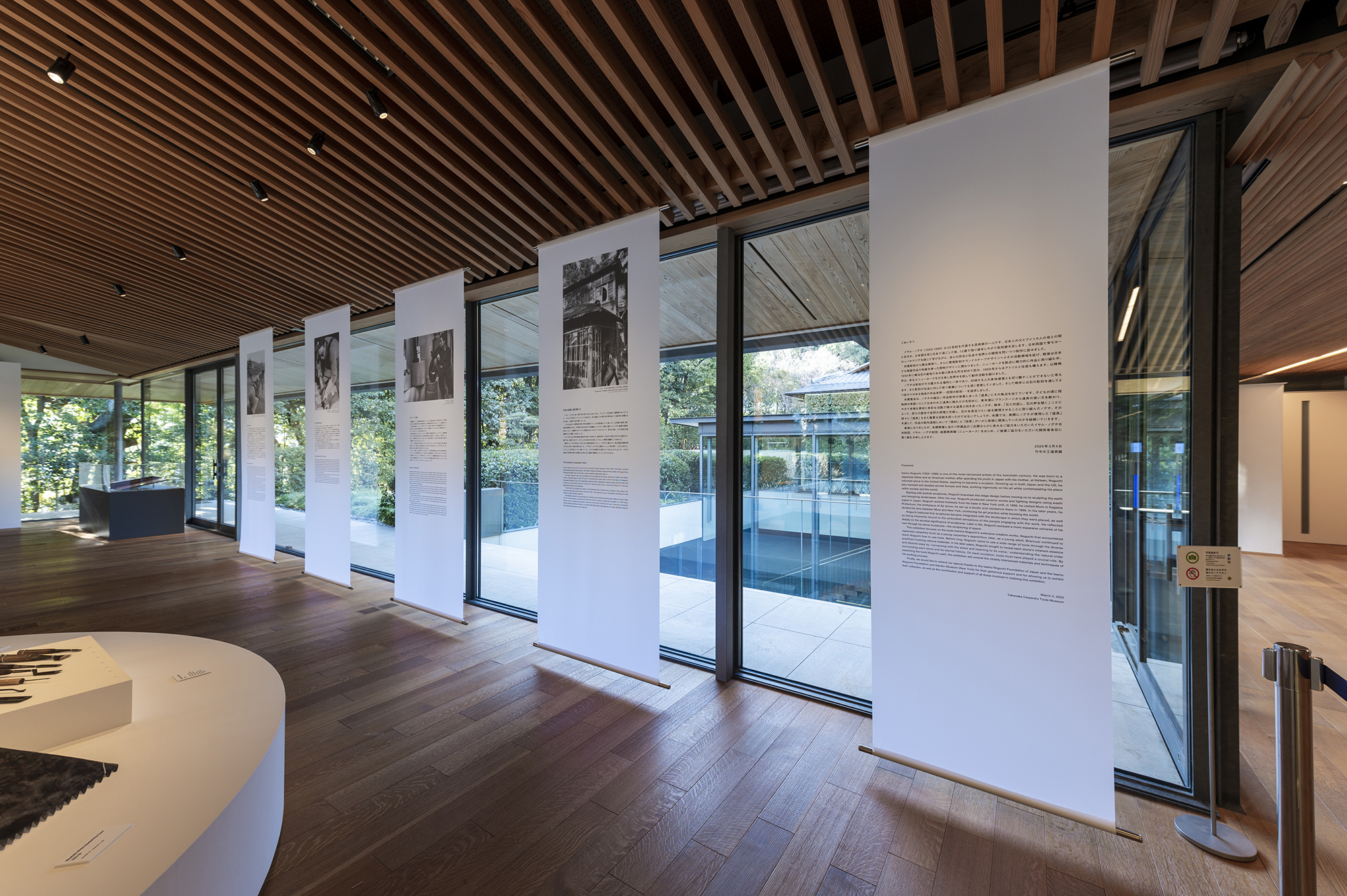 On the window side, a banner summarizing the relationship between Noguchi's biography and tools is displayed. |
|
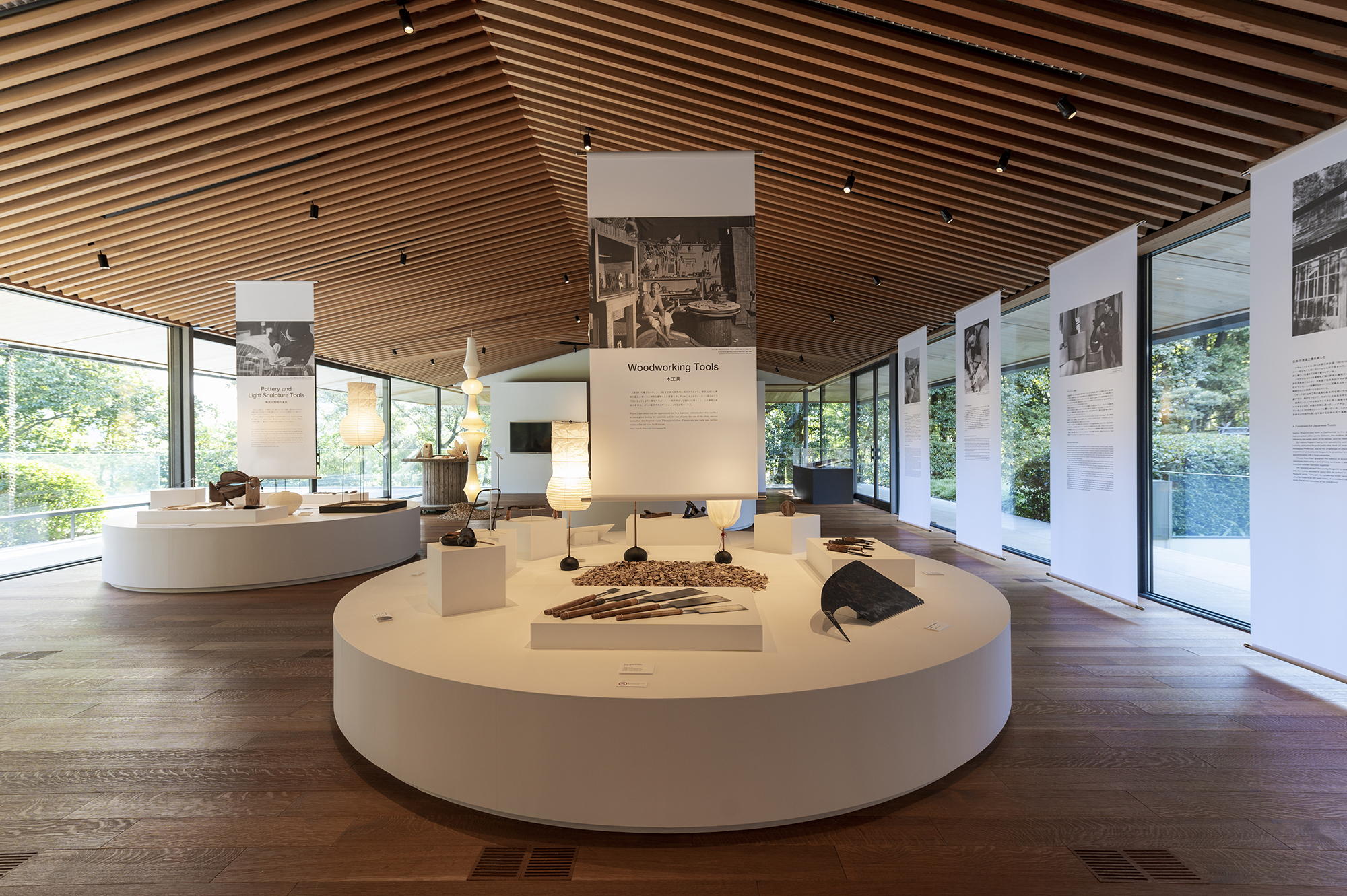 The first exhibition stand is the “Woodworking Tools” corner. The exhibition stand is an image of a circular worktable (wooden drum) used in the studio of McDougal Alley in New York, which was used after the war. |
|
| It is not surprisingly known, but Isamu Noguchi lived in Chigasaki, Kanagawa Prefecture when he was a boy, and at the recommendation of his mother, he was training with a finger craftsman (furniture craftsman). As a result, Japanese woodworking tools were able to be used properly, and he wrote that when he traveled to the United States at the age of 14, he packed a set of tools and brought them. | |
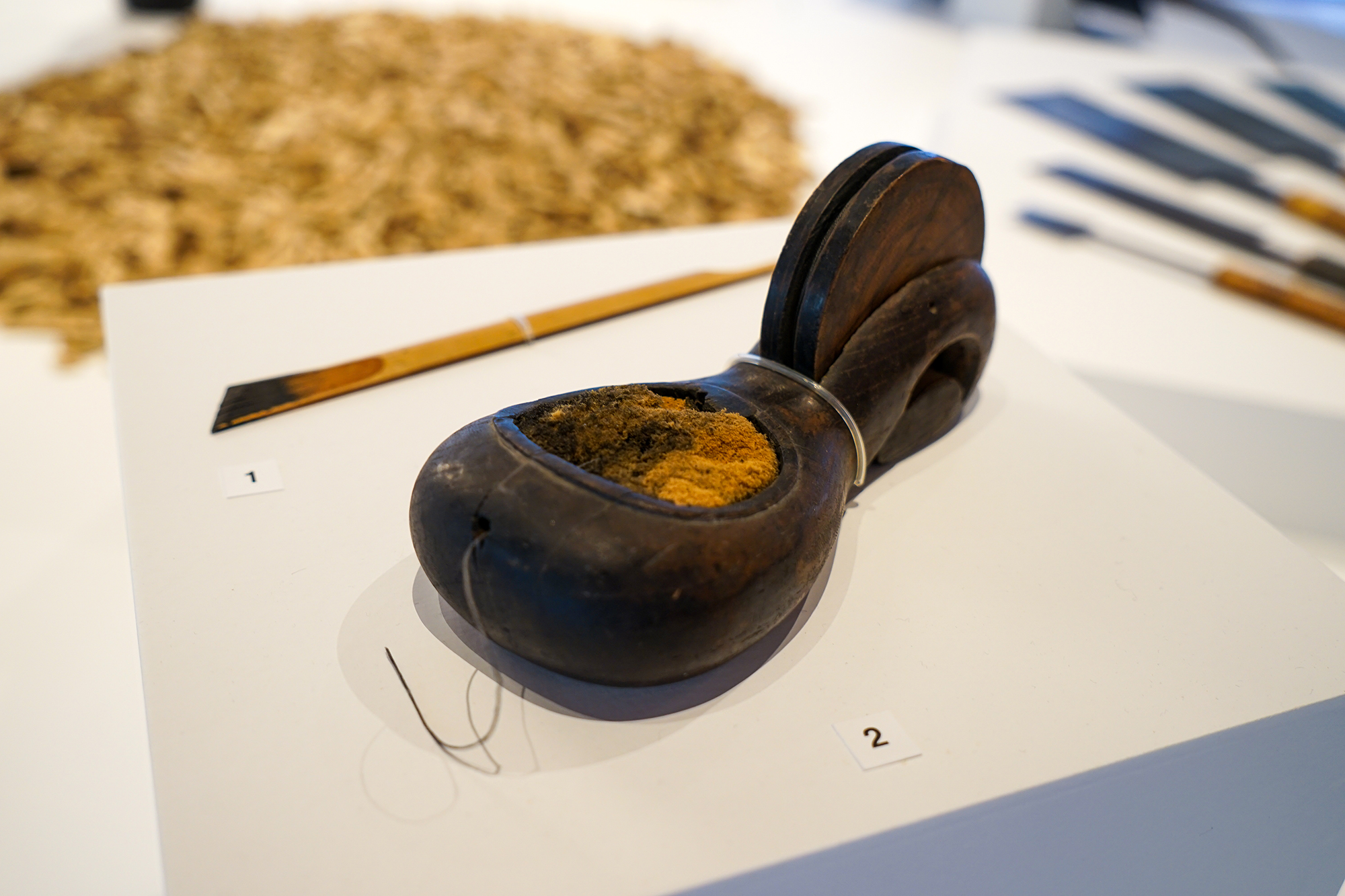 It is not clear whether the woodworking tools exhibited this time were used during childhood, but the only thing that retains its memory is "Sumitsubo". On the back, there is an inscription "July 1915 Shincho Oishi Isoyoshi", which can be seen as a tool of Noguchi Shonen. Did you get it from a craftsman who took care of you? |
|
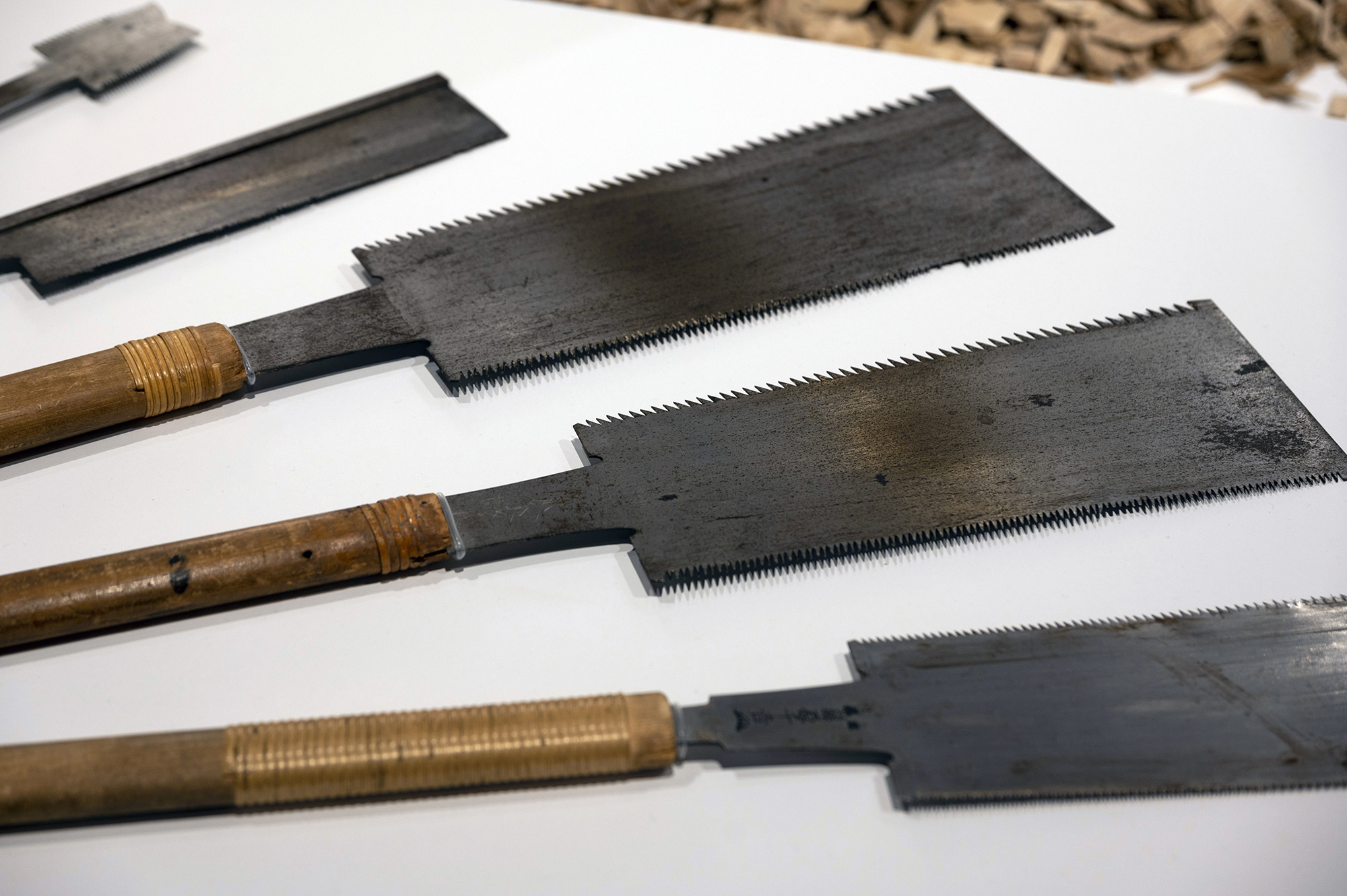 Japanese-made tools included in the collection. Some saws have blades spilled, indicating that they were used as a practical product. |
|
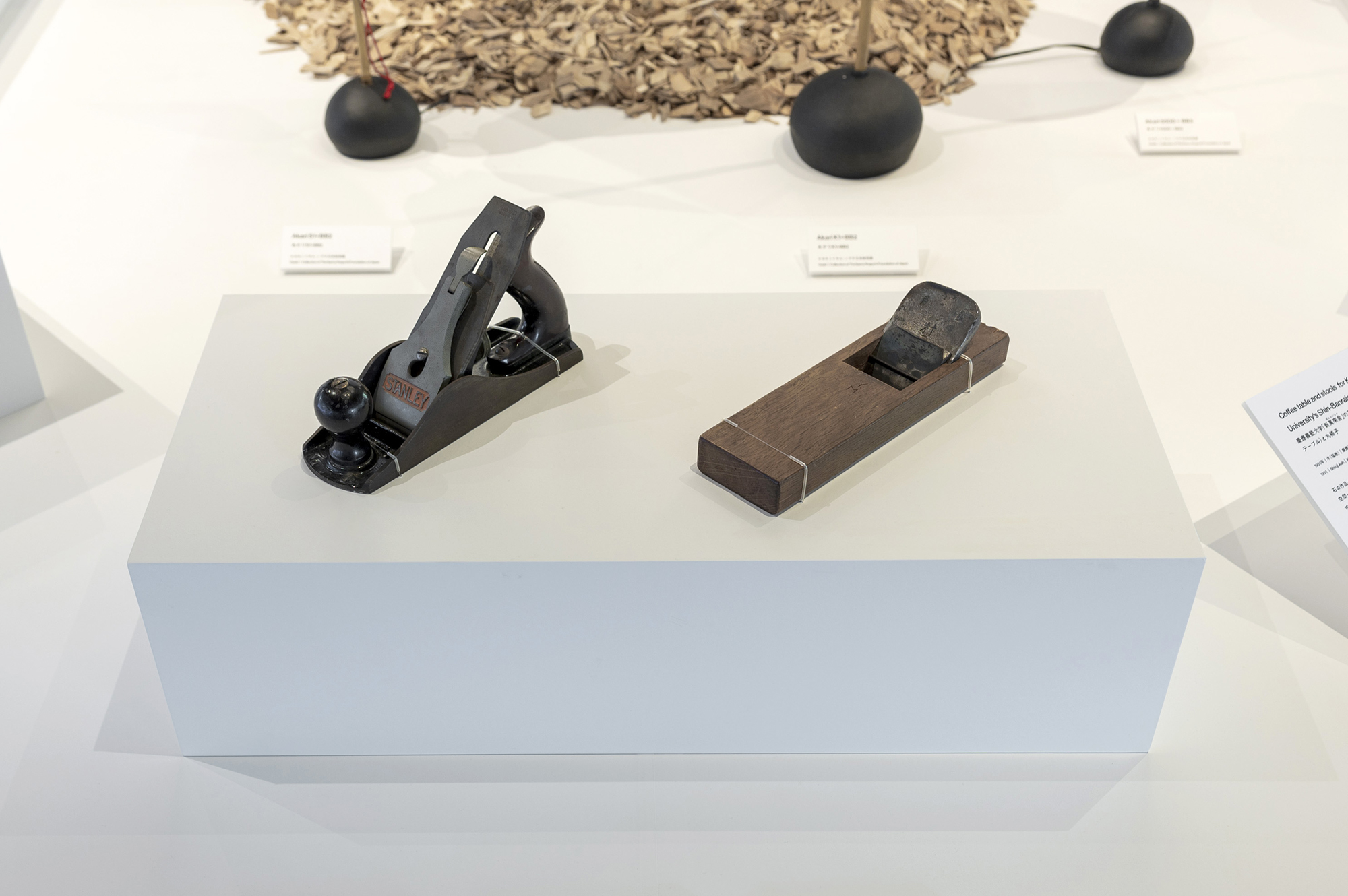 Noguchi was able to use both Japanese tools and Western tools. Is it something like bilingual of tools in today's style? The exhibits are Western push-use Kanna (left) and Japanese pull-use Kanna (right). For details on how to use the tools, please refer to the permanent exhibition in the museum. |
|
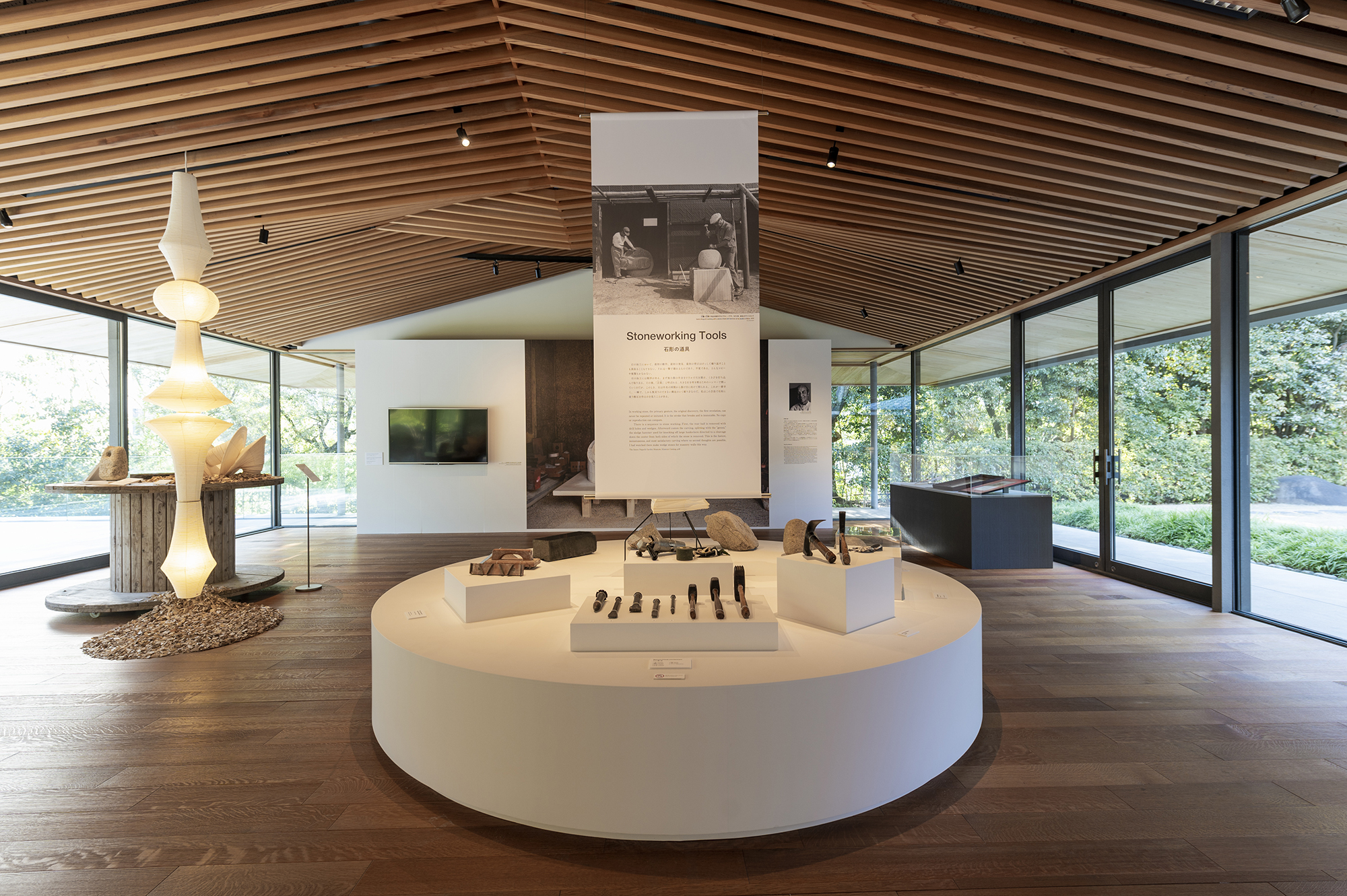 The second exhibition stand is the "Stoneworking Tools" corner. Isamu Noguchi is a stone sculpture. The tools and materials that produced them are displayed. |
|
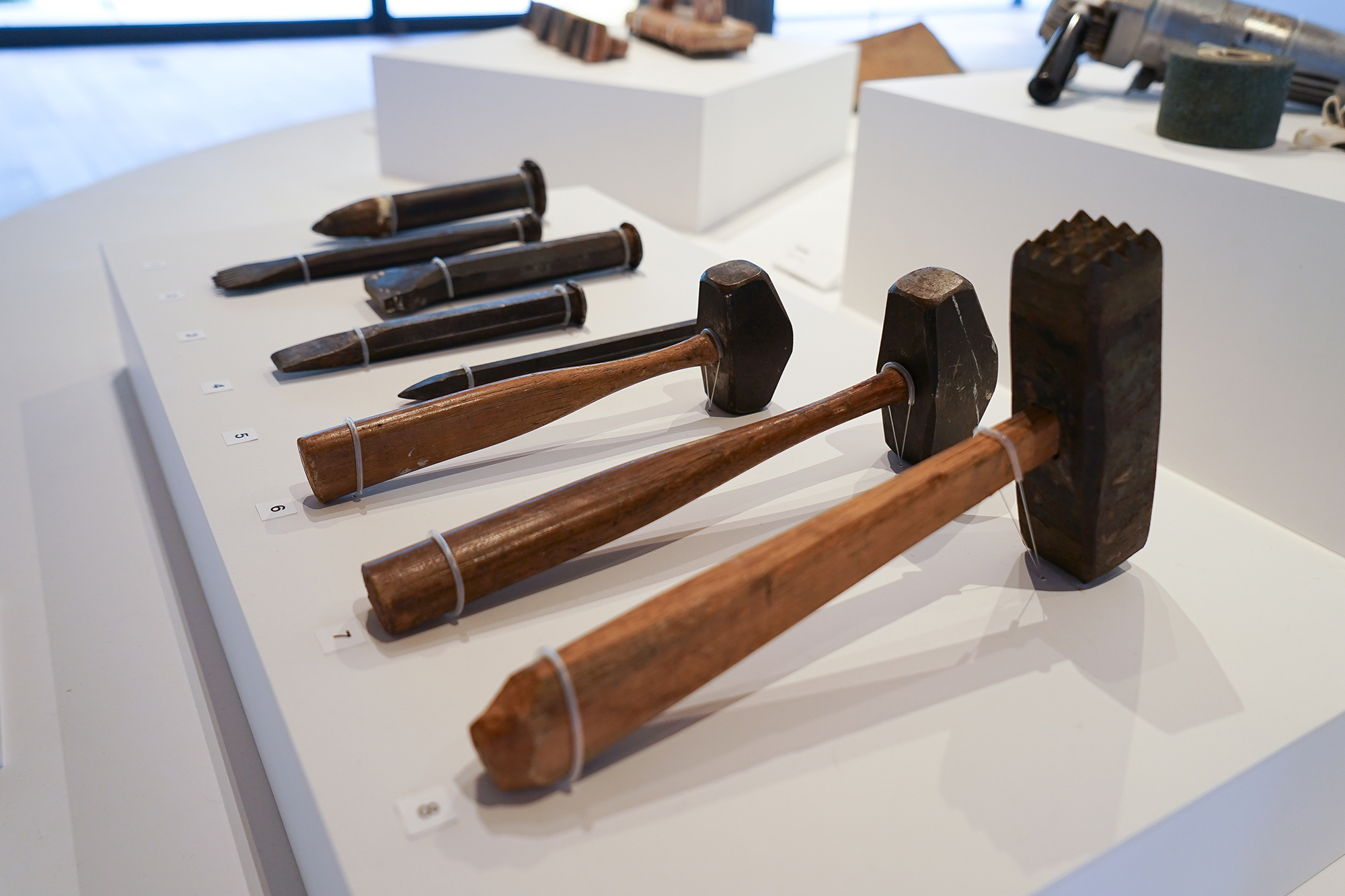 The tools for processing stones are the same as those used by Japanese masonry craftsmen. Cut it with fleas and hammers. Detailed usage is also introduced in the video. |
|
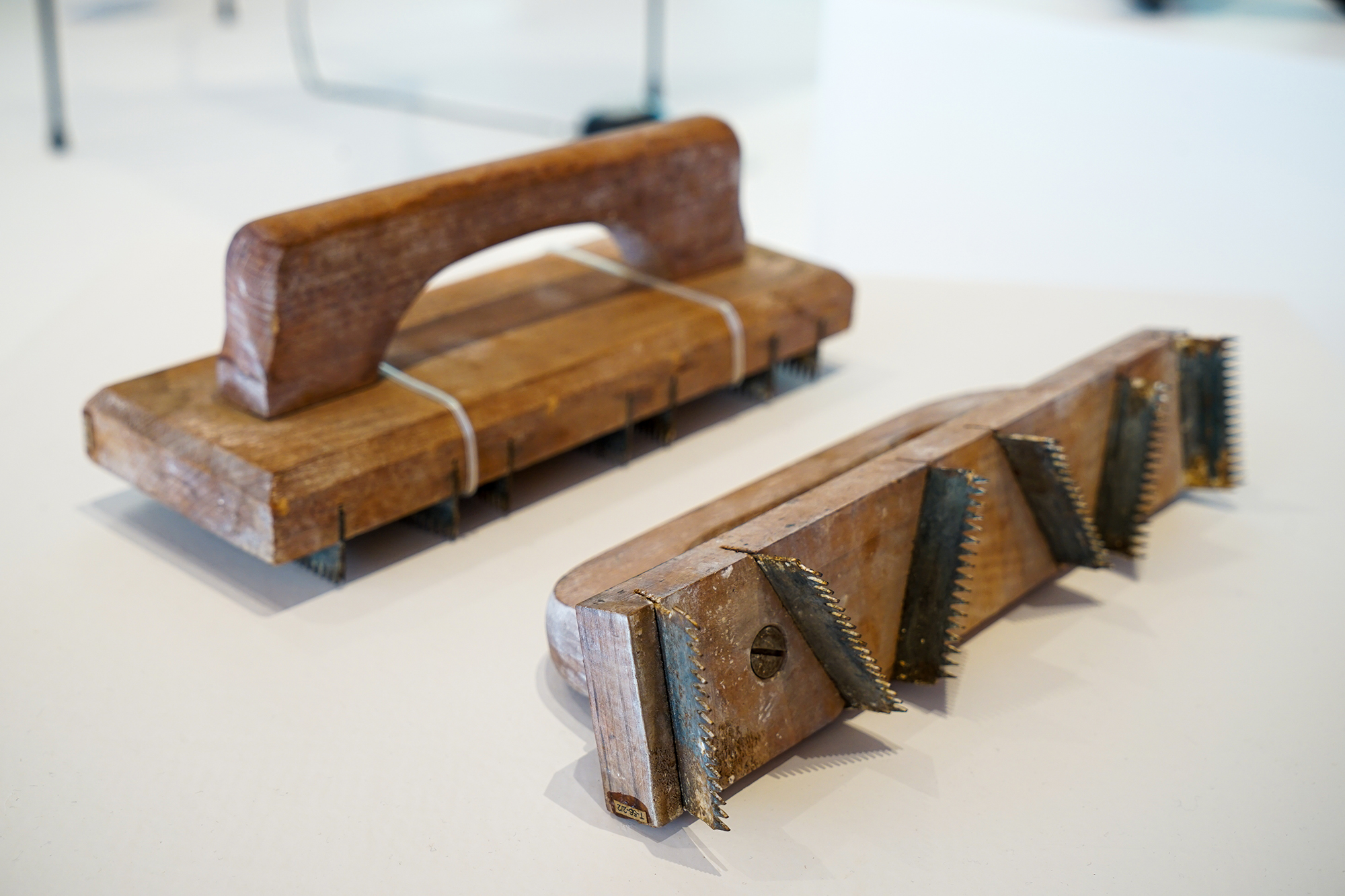 This is a tool "railway" used to cut the surface of the stone at the Blankusi workshop during the Paris training period. It was called "railway" because it moves with gigigigigigigigigigigigi in front and back. |
|
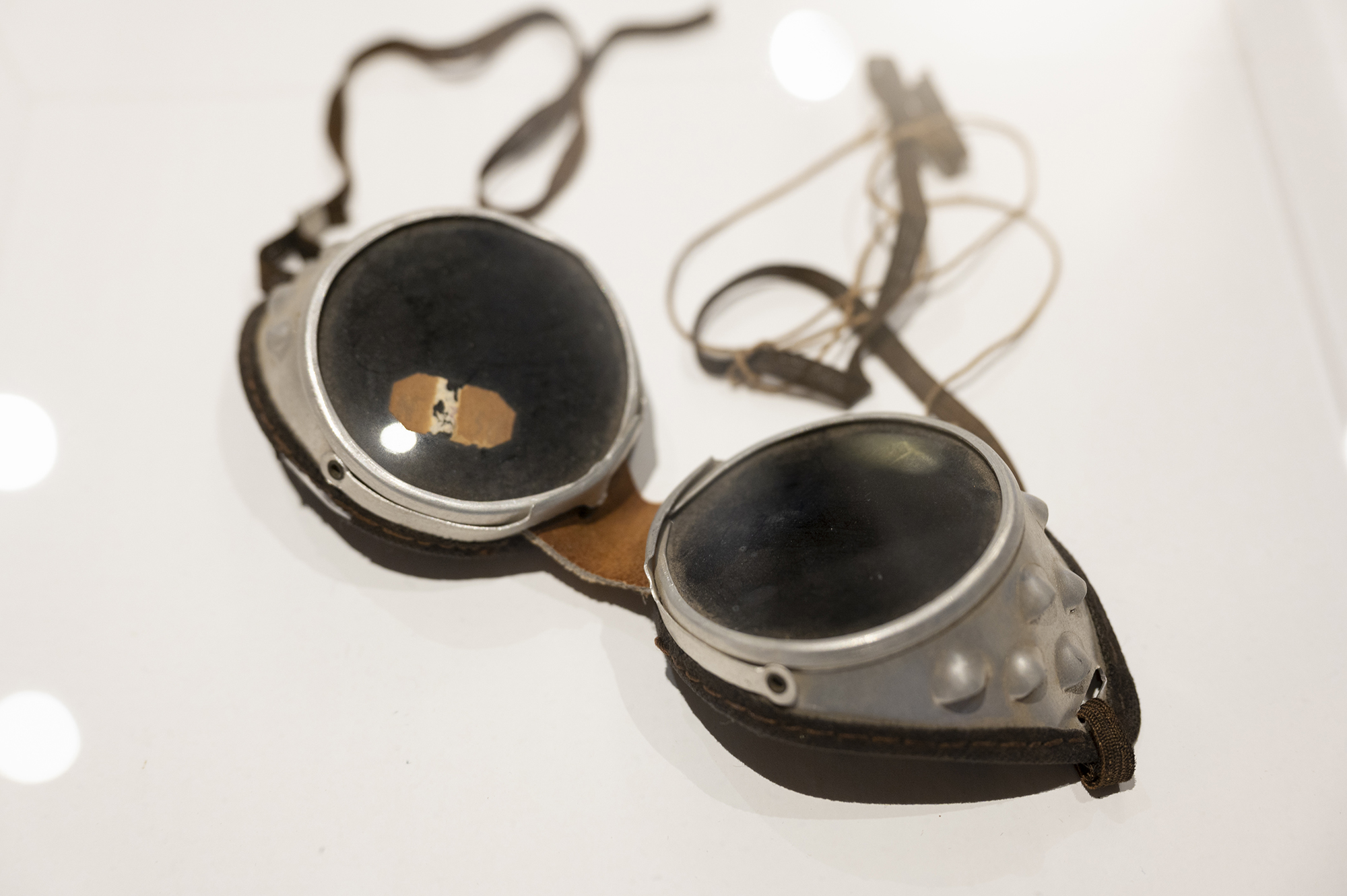 Goggles used when making relief (1939) for the AP News Building. This is a memorable material that has been completed by continuously processing stainless steel with an electric grinder. |
|
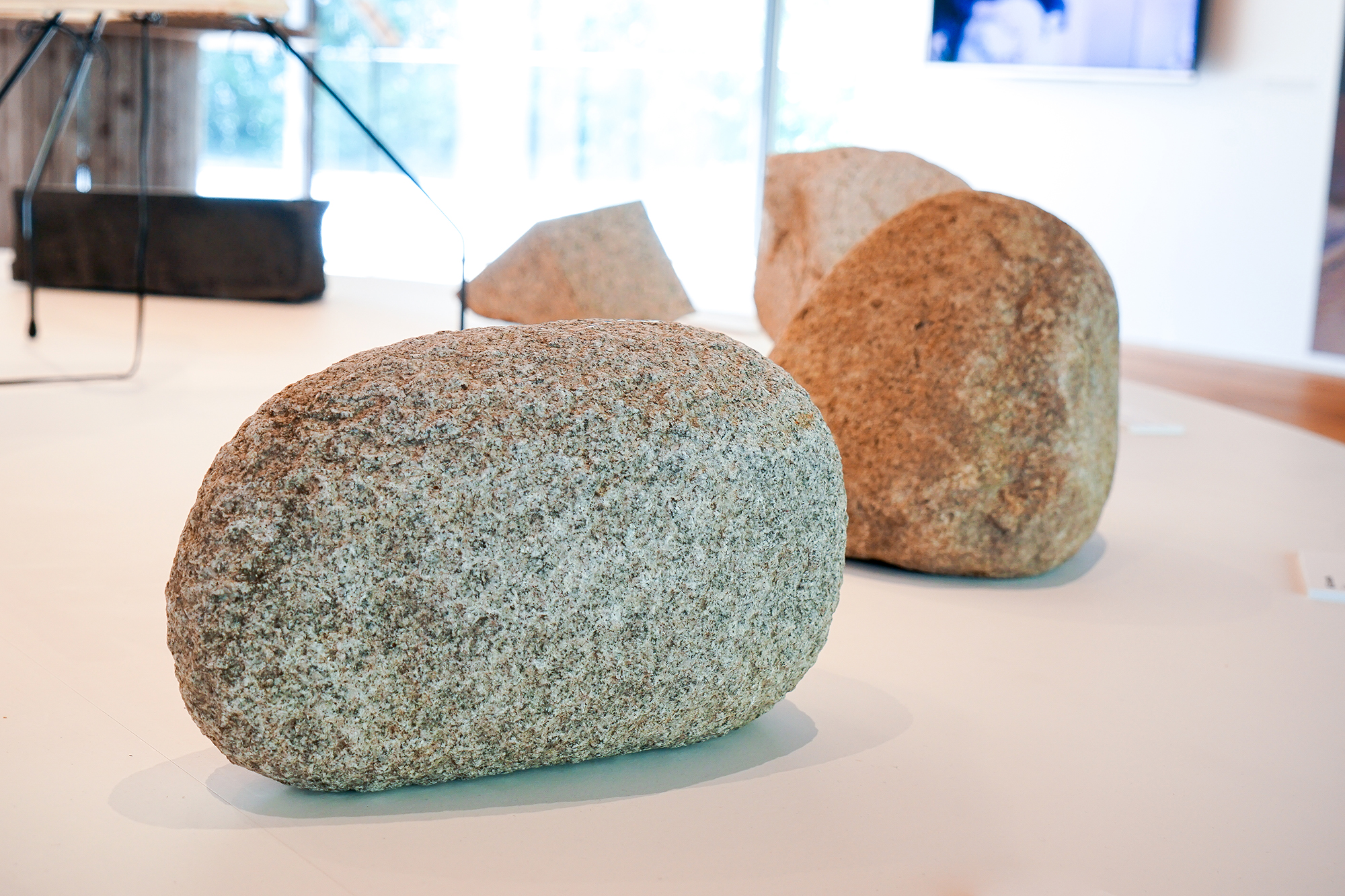 A stone sample borrowed from Izumiya Ishi atelier, who produced the work in collaboration with Noguchi. You can see that Noguchi used a variety of stones. |
|
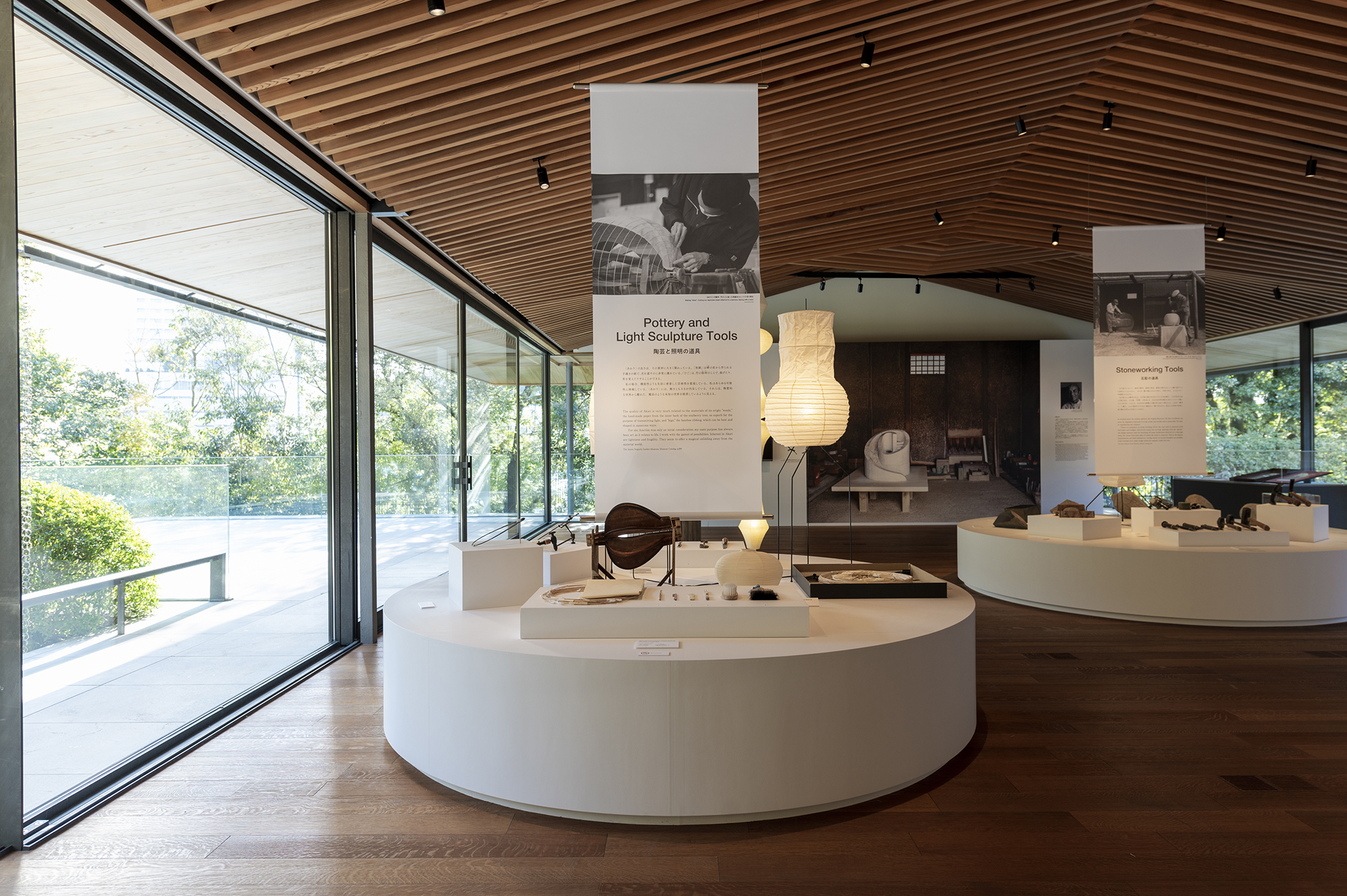 The third exhibition stand is “Pottery and Light Sculpture Tools” corner. |
|
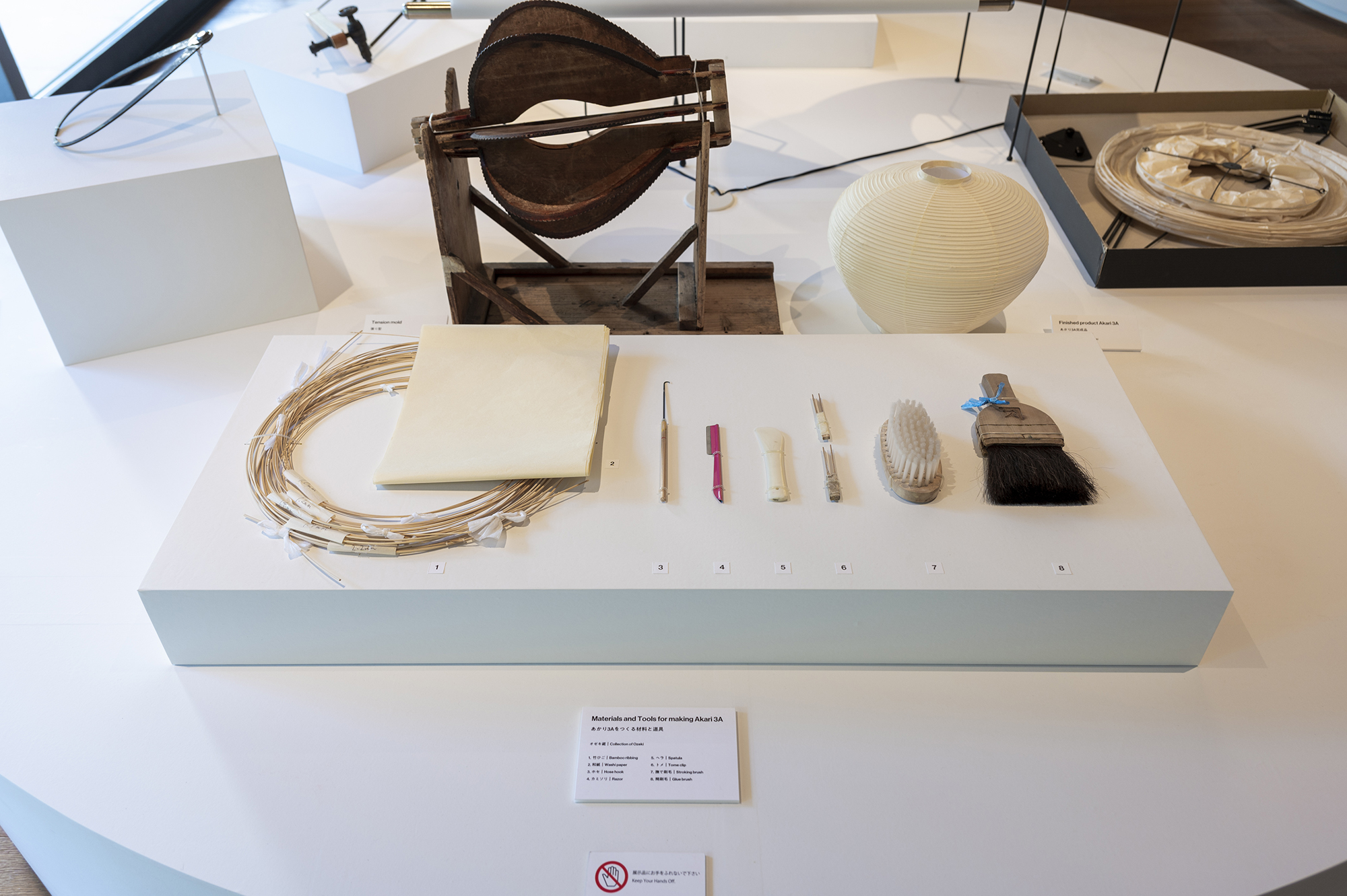 Lighting "Akari" series, which Noguchi called "Sculpture of Light". It is manufactured by Ozeki Corporation in Gifu. This time, I was able to borrow a tension type, various tools, and material samples specially. If you look at it together with the images shown in the venue, you can understand well that it is manufactured using traditional Gifu lantern technology. |
|
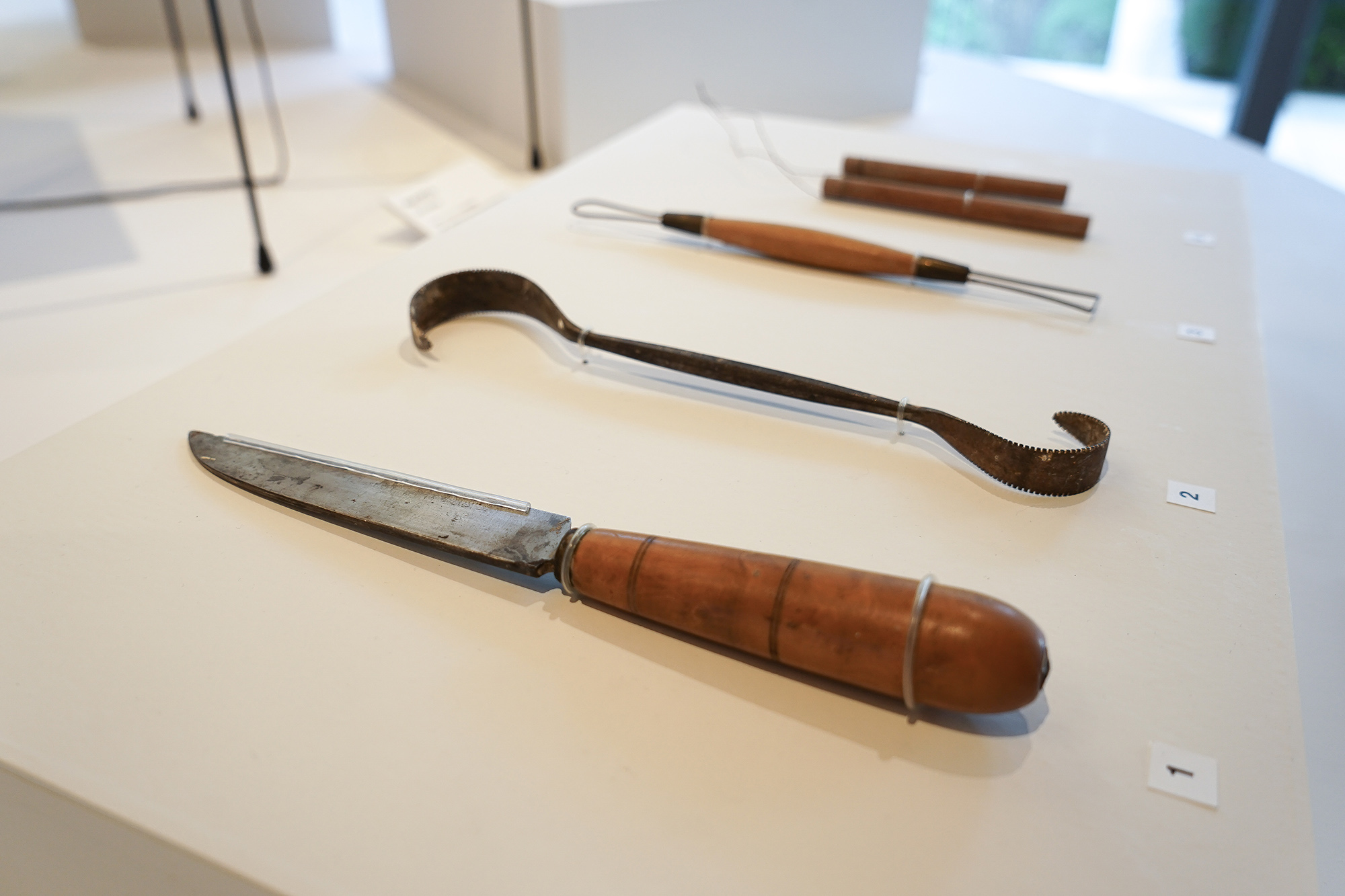 In the 1950s, Noguchi became close to the artist Rosanjin Kitaooji, and rented a workshop to produce many ceramic works. It seems to be the tool used at that time. |
|
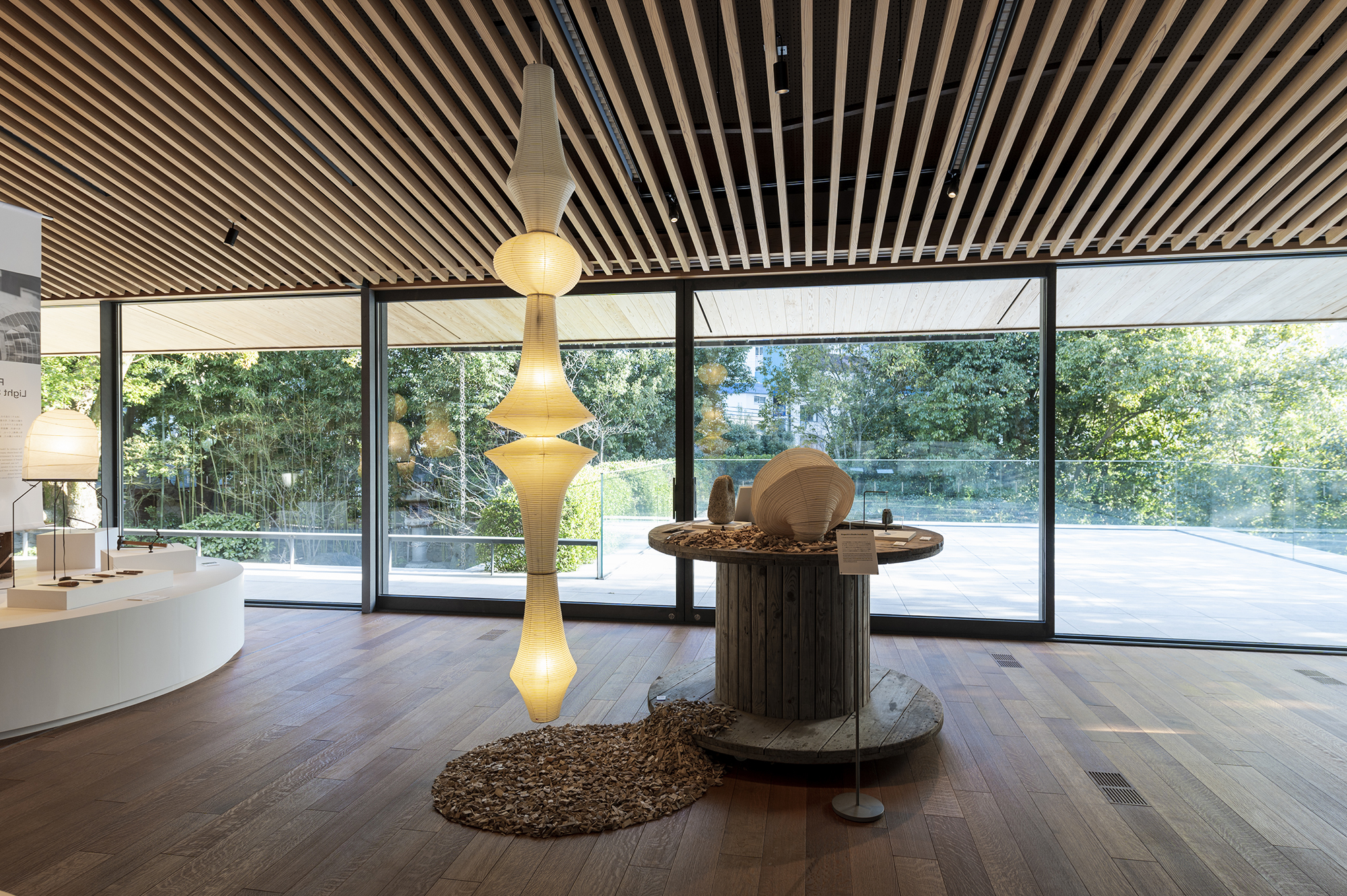 An installation inspired by a studio work bench set up in McDougal Alley, New York. The shade of "Akari E" on the display stand is expressed as a sculpture in the middle of being cut out. |
|
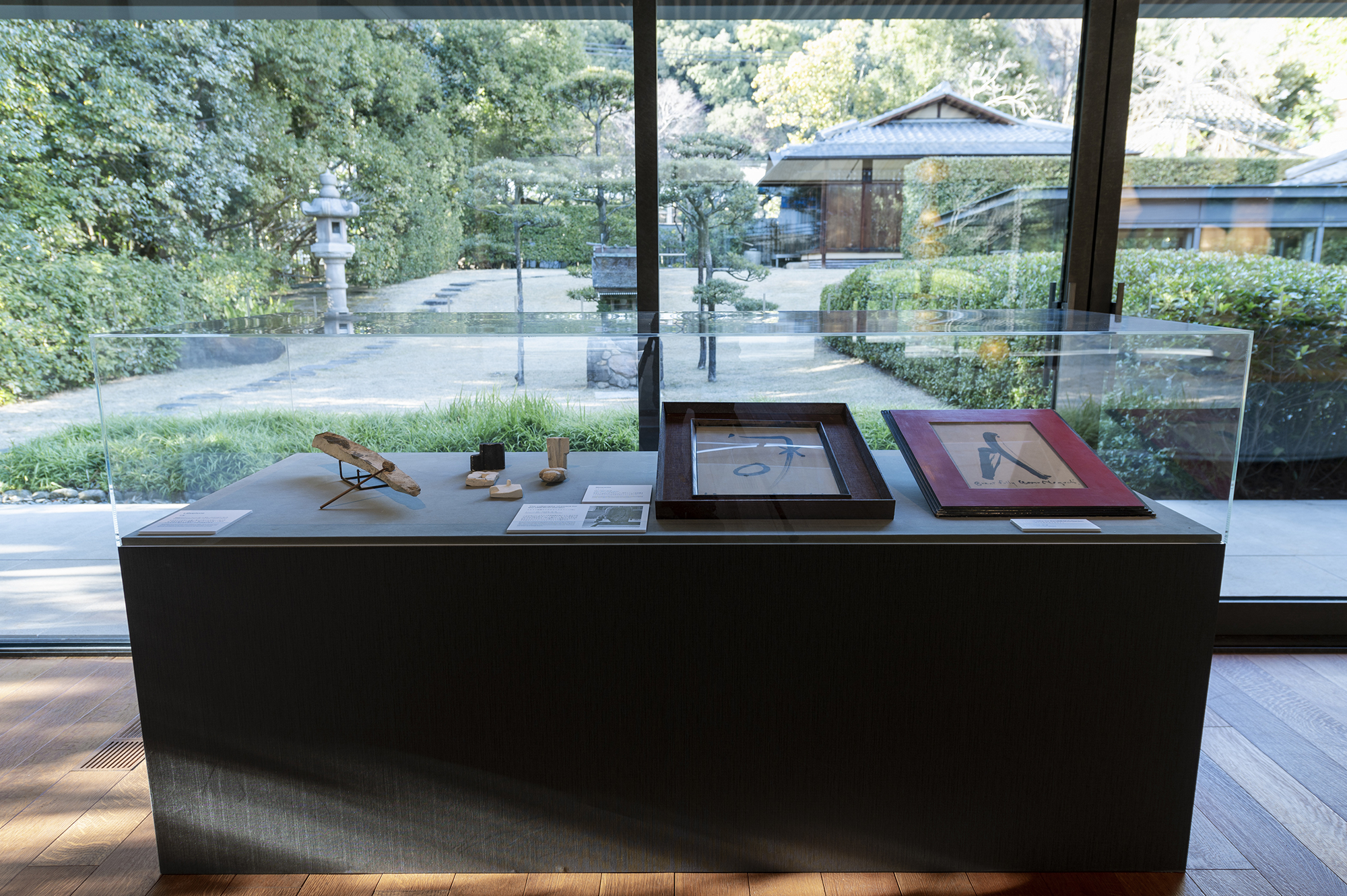 This is an exhibition of materials related to the Okayama era in Noguchi. The two calligraphy works made for the creation of a monument in the UNESCO headquarters garden in Paris (around 1958) are a must-see. |
|
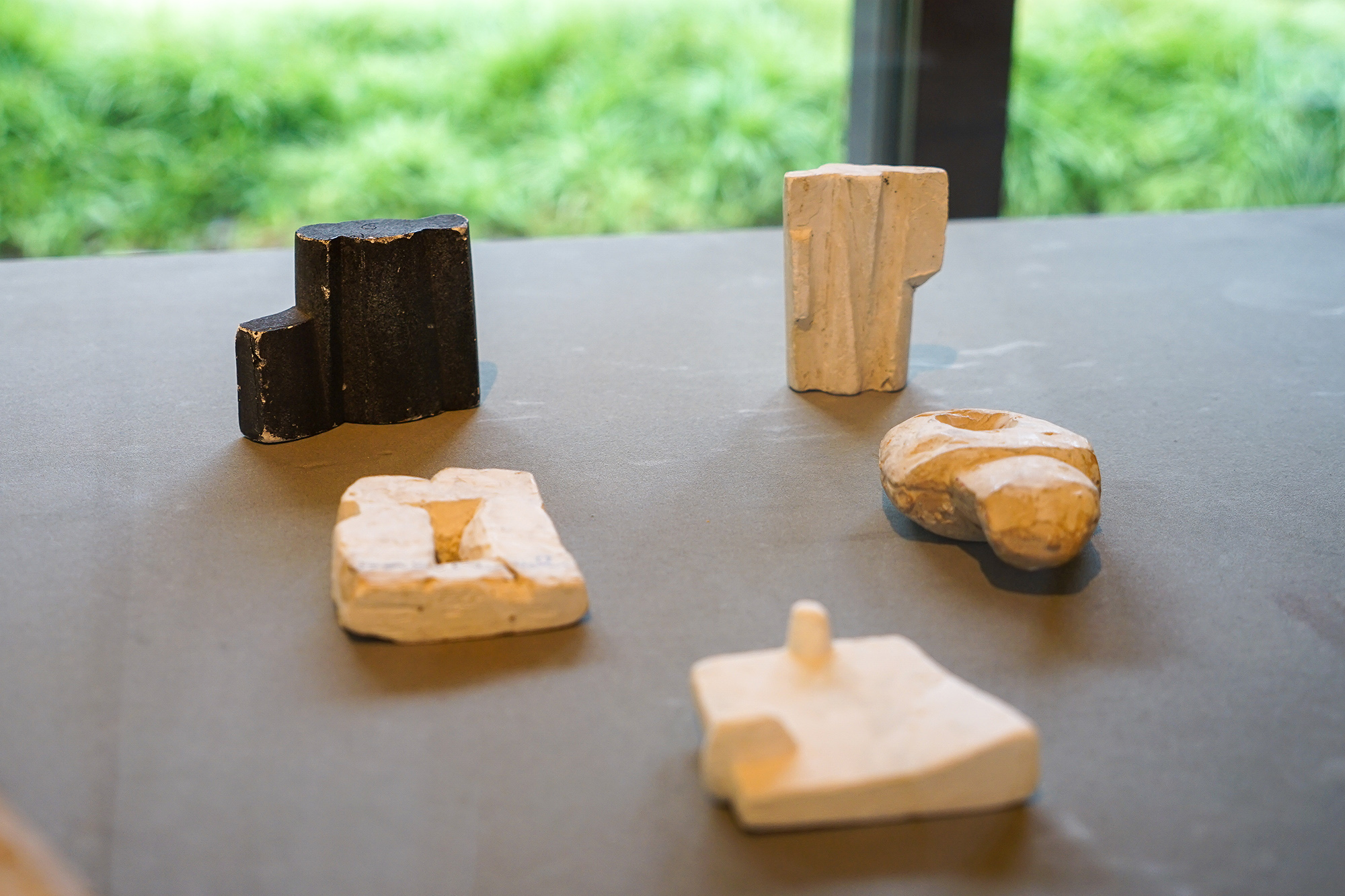 This is a study (small model) for monuments produced in the Okayama era. In the world of carving, it is called a mackett. It is rare for a macket to be exhibited, so please take a look at this opportunity. |
|
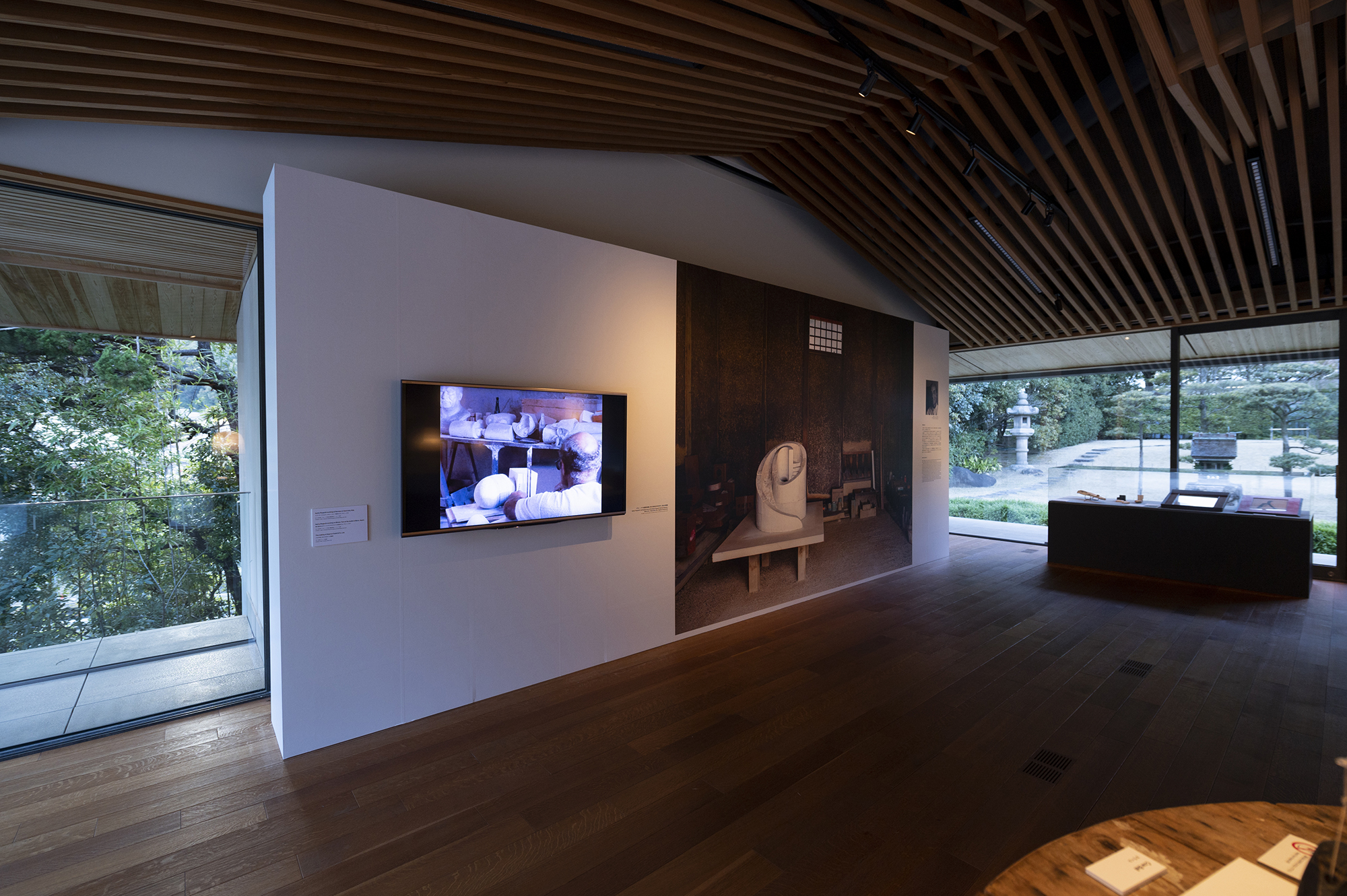 On the back wall, Isamu Noguchi's atelier (work storehouse) preserved in Mure-cho, Takamatsu City, Kagawa Prefecture is shown. If you actually visit the site, you can still enjoy the atmosphere that Noguchi is producing here. In addition, you can see short video works on a large 60-inch screen. I hope you can enjoy it together with the exhibition. |
|
| <Video work> ・Isamu Noguchi produced in Henro, Quercheta, Italy (3 min.|around 1970) ・Isamu Noguchi (3 minutes | around 1978) producing "Momotaro" at his studio in Mure, Kagawa Prefecture ・Manufacturing of Lights at Ozeki Corporation (3 minutes|2019) |
|
| The museum shop sells catalogs of this exhibition, as well as "ISAMU NOGUCHI Isamu Noguchi Garden Museum Japan", "Isamu Noguchi Discovery Road" (2021 Tokyo Metropolitan Art Museum exhibition catalog), "Isamu Noguchi Life and Works I want to know more", and postcards. Please take this opportunity to purchase it. | |
| (Chief Curator, Tadanori Sakamoto) |